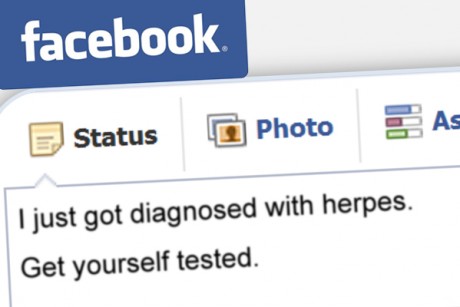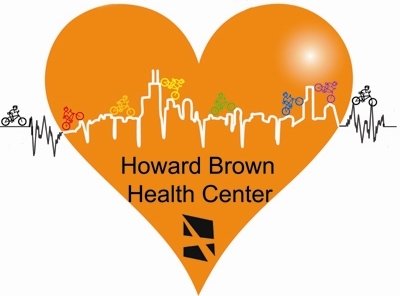Thirty years into the AIDS Pandemic, despite the fact that we have much effective treatment for HIV, we haven’t tipped the balance in our favor in the fight against AIDS—especially in the United States. The new infection rate for a disease that is preventable has remained flat here for nearly a decade. And yet, around the world, HIV incidence rates are declining: proof positive that we have the tools to turn the tide against HIV. So why can’t we do it in America? The short answer is: We can, we’re just not applying the best strategies where they’re needed most. That may soon change if a few frontline warriors have their way.In December 2011, a new report issued by the Centers for Disease Control and Prevention (CDC) painted a stark reality. It showed that one in five HIV-positive Americans don’t know they’re living with the virus. Worse, of the estimated 960,000 Americans who do know they are living with HIV, only about half are in regular medical care. And, stunningly, of the 1.2 million Americans estimated to be living with HIV, a mere 28 percent are on medication that keeps their HIV infection from leading to AIDS and also helps stop the spread of the virus. One study found that monogamous heterosexuals with HIV who take their medication as prescribed and have an undetectable viral load for at least six months can see a 96 percent reduction in the risk of transmitting HIV to their negative partners.
Today we are armed with powerful, simplified HIV drug regimens, so how is it that we are still failing to treat the HIV community on such a grand scale? For years, people have argued that the barriers to care were simply insurmountable. Indeed, a study conducted in 1999 by the Johns Hopkins HIV Clinic in Baltimore showed how a host of life stressors challenged that city’s urban HIV population so severely that the clinic was unable to keep its clients in long-term HIV treatment. At that time, only 37 percent of Hopkins’s HIV patients in the study had suppressed viral loads. For people of color, the rate was a dismal 25 percent. Sadly, the data made many HIV doctors across the country reluctant to prescribe HIV meds to at-risk patients.
But the times they are a-changin’. In August 2011, the HIV team at Hopkins released a new study showing a stunning turnaround in the health of the HIV-positive people they treat. Between 2003 and 2009, Hopkins retained an impressive 94 percent of its clients—a population that has grown older and included more women and heterosexuals—in care. By 2010, 84 percent of the HIV clients at Hopkins had a fully suppressed viral load. The results proved that new approaches could lead to a new era of access to care for people living with HIV, and that HIV providers can help even the most high-risk populations be effectively treated with HIV therapy. (A third of Hopkins’s clients self-reported injection drug use.)
“Antiretroviral Therapy: Now ‘It Just Works’” is the title of an editorial commentary on the Hopkins results written by Paul Sax, MD, clinical director of the HIV program at Brigham and Women’s Hospital in Boston, and published in the September 2011 issue of Clinical Infectious Diseases. It has become a motto for many who previously abandoned hope for the health of their patients.
In the shadow of the CDC’s scary stats from last year, the recent success at Johns Hopkins has led the CDC to issue a rallying call to solve the problem. The federal agency asked public health officials and HIV providers to follow a key element of the Obama administration’s National HIV/AIDS Strategy: namely, to improve patient engagement at every step along the continuum of care, starting with a positive HIV test, through immediate linkage to care and commencement of treatment, and including retention in care for the long term.
The Hopkins results suggested that the key to connecting people to—and keeping them in—care is overcoming the constellation of risk factors that affect wide swaths of the HIV population: homelessness, substance abuse, stigma, poverty, lack of transportation, lack of medical coverage, fear or mistrust of the medical system and impatience with red tape and bureaucratic hassles.
Any one of these can cause people to miss their appointments. A missed appointment is the time when HIV providers and social service agencies need to be on high alert for ways to re-engage patients and to work with them to address and resolve those barriers to care. Indeed, doing so involves a lot of hard work and a commitment to getting results.
Richard Moore, MD, director of the Johns Hopkins Hospital HIV Clinic and coauthor of the new study, breaks it down. His team has succeeded against all odds, he says, by providing a kind of home away from home for people living with HIV. Primary care and all kinds of specialty care are provided under one roof. Using an electronic records system in place for two decades to keep tabs on every patient, medical providers work with a team of social workers and other support staff to make sure people don’t fall through the cracks.
“If a patient misses a couple of appointments in a row, you wonder if there’s something interfering in their life that’s making it hard for them to come in, or maybe they’re fatiguing in regard to care,” Moore says. “Knowing that patient may be having problems and giving them a call, routing them to see a case worker or something of that sort is one way we use our system to try to troubleshoot before an issue gets out of hand.”
The Hopkins group is also always looking for ways to integrate new HIV treatment guidelines into its practice. And thanks to the electronic records system, it’s easier for providers to monitor the effectiveness of new medical approaches and protocols and to measure their success.
Kaiser Permanente is another group that has been highly effective at engaging and keeping people in its HIV program; 95 percent of the national network’s HIV-positive clients have suppressed viral loads. Eager to export Kaiser’s model and share the lessons his team learned from years of experience treating people with HIV, Michael Horberg, MD, the program’s director, challenges other HIV providers to improve patient retention and care. Kaiser can enter aggregate patient information into a database, allowing Kaiser to compare treatment achievements among HIV providers across the country. Horberg’s division offers free mentorship to other health care providers nationwide and presents tools and information on its website, kp.org/hivchallenge.
Meanwhile, the National Quality Center, NQC, an initiative of the New York State Department of Health, has also created a program to export proven care models across the country. Currently, it is working with 400 U.S. HIV providers who serve over 400,000 positive people. Encouraging retention in care is a central goal. NationalQualityCenter.org, the group’s website, presents a clearinghouse of information for HIV care providers. The center also offers opportunities for mentorship from academic researchers and other coaches.
Is sharing best practices enough, or do we need structural shifts in health care to get more of these hundreds of thousands of untreated people with HIV into care—and test those who still don’t know they have HIV?
“Mentoring is a great idea,” says Moore, adding that his Johns Hopkins clinic has also hosted visiting HIV providers from around the world for mentorship sessions. “Inasmuch as a practice that may not have the resources can get tips about maintaining retention or keeping up to date with guidelines, that’s fine. But our rather fragmented health care system doesn’t support that very well at the moment. I’m hoping that some of the changes taking place over the next two years will help support that. I don’t think that there are easy solutions here.”
While Hopkins produced the evidence that the right techniques work to connect people to and keep them in care, and Kaiser Permanente and the NQC will do their best to help roll out best practices, the best role models remain those organizations (some large and well-funded, some small and struggling) that learn new techniques every day as they fight HIV in some of the most challenging arenas. Often, what distinguishes their work is the ability to provide the critical personal touches that make the difference when it comes to getting people with HIV committed to long-term care.
POZ asked representatives of three such groups what works—and why.








